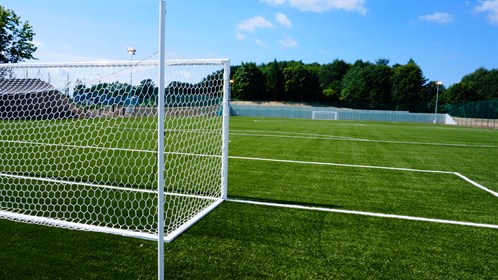What is artificial turf?
Artificial turf is a carpet developed to closely resemble natural grass. Although the idea is to copy natural grass, artificial turf is exclusively composed of synthetic materials. Below we explain the rationale and the benefits.
Back in the mists of time…
The construction of the first artificial turf sports field in 1965 in the Astrodome, Houston, Texas was a memorable event and essential for the introduction of artificial turf into the sports industry. After the Astrodome, a lot of artificial turf sports fields were installed in the 1970s.
Although, even then, the benefits were many, players and spectators had a preference for natural grass. It should be emphasised that the characteristics of playing on artificial turf at that time was not like it is today, and also the robustness of the material caused many injuries.
The evolution of artificial turf since then has been impressive. Little by little the construction has changed, the materials have been optimised and adjusted for specific usage. With this development, we find artificial turf not only on sports fields but also in gardens, on terraces and industrial sites.
Today, we can conclude that artificial turf is a valid alternative to natural grass with even more advantages.
Artificial turf for sport
An artificial turf sports field is a system which consists of several steps and multiple materials. Each component plays an important role in the quality and characteristic of the field. The basic construction consists of a permeable material, a drainage system covered by sand or gravel. If the system has a cushioning layer, it will be installed afterwards. Depending on the type of sport, different systems have been developed: sanded or semi-sanded, sand and rubber.
Artificial turf is available in various pile heights (the height of the straight fibres) and this height will determine, for filled systems, the amount of sand and/or rubber needed. The pile height, the possible filling and base structure are always compatible.
We could try to convince you that playing conditions on artificial turf are as good as those of natural grass, but we now also have the numbers to prove it. How the ball rolls, how it bounces and shock absorption are only some of the specifications that are measurable and therefore comparable. Organisations like FIFA and FIH have a system of very strict tests, which results in only the best systems being approved and receiving a certificate.
The advantages of artificial turfare numerous. Just the idea of being able to play the whole year round, regardless of the seasons, in perfect playing conditions that never vary. Not having to worry about mud or rain, just an immaculate green pitch at all times. Sowing, mowing, fertilising and line marking are a thing of the past so there’s less work, less cost and less worry.
Artificial turf football pitch

Artificial turf for the garden
Artificial turf for landscaping must not only be durable, it must also be beautiful and look like natural grass. Also, used in this way, artificial turf has come on in leaps and bounds in terms of quality, and we offer lawns that are impossible to distinguish from the real thing. A word of warning, however, some things are more important than aesthetics! If you choose artificial turf, it’s very important to go into all the details and find out what it’s made of, the materials used, product quality and warranty.
That being said, our artificial lawn is the perfect solution if you want to spend more time enjoying your garden and less time maintaining it.


